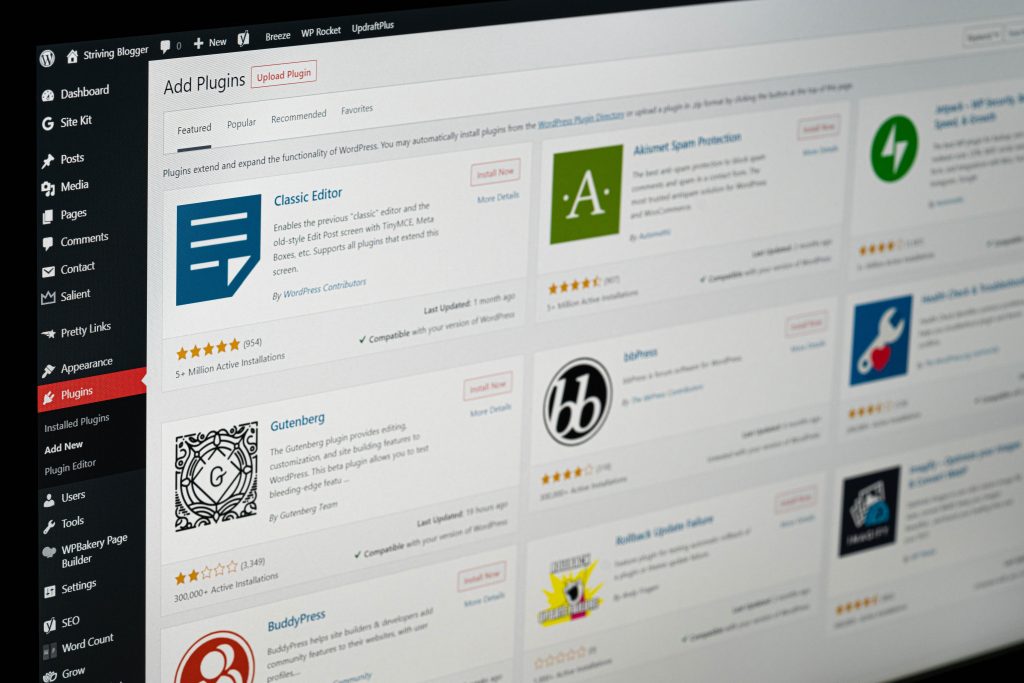One of the benefits of Emberly Digital’s maintenance package is our continued updates and support for plugins that make WordPress websites run. Many of the plugins on our maintenance websites are licensed under a commercial developer’s license to our company, and we pick the plugins we choose to purchase, support, and use carefully. They dramatically affect the websites we build, and can have significant positive or negative effects. When we build a website, we use a set of plugins that have been handpicked by us to perform well together and ensure long-term functionality.
So, we wanted to open up our thought process so you can understand why we choose the plugin set that we do. Here are a few criteria that we use when adding a plug-in to our development arsenal.
1. The plug-in’s code is well-written, organized, and secure.
Plugins with poorly written code can lead to bugs or even worse, malware, hacks or spam and sections. We look for organized code that meets WordPress coding standards and is up to par with strict security protocols. This means sanitizing user inputs to avoid SQL injection and many other security optimizations.
2. The plug-in has been in active development for at least 2 years.
We’re not opposed to using new plug-ins, but in our experience quality development takes a long time. We want to ensure that any plugins we use have stood the test of time, and had time to be responsive to user feedback, and continue to be developed as the WordPress environment changes. A developer who isn’t fully dedicated will abandon a plugin when significant new WordPress changes are rolled out, and this separates the wheat from the chaff—committed developers will release new version after new version.
3. The plug-in has at least 10,000 active installs.
Our 2-year rule is a test of time, while this rule is a kind of stress test. If over 10,000 people have used a plug-in and it is still well reviewed and well regarded, it’s likely to be a pretty great plugin.
4. The plug-in has a paid or premium version.
Once in a while an open source or free software will be developed at a high level of quality, but for the most part high quality development requires a lot of time, and thus, funding. This is why we find that plugins with premium versions available are typically higher quality than free plugins alone.
We don’t have to use the premium version of the plug-in, but having a paid track incentivizes continued development and better support response times.
5. We’ve had a positive interaction with the plug-in’s support team.
We want to have at least one positive interaction, preferably multiple, with the plugins support team to ensure that they are technically competent and available to help.
6. The frontend of the plug-in is configurable.
Some plugins develop a front end that has one look – and it’s difficult to change. A plug-in that provides a configurable front end interface will either allow us to modify the end user view using settings or CSS. A well-coded plugin will allow us to use simple CSS to make changes. We’re looking for clean classes we can hook into, few if any uses of cheat methods like !important, and messy CSS like absolute positioning and negative margins only being used when absolutely necessary.
7. There is good development support for the plug-in.
Good hooks, filters, template parts, and a method of utilizing the REST API mean a plugin is able to be extended or integrated into other functional pieces of the website.
Conclusion
We’re committed to creating great results—and great results means great plugins. We hope these criteria are helpful for thinking through what makes a great plugin that can perform for a long time. Ultimately, there are occasional exceptions to every rule (except #1), but this framework helps guide us in making great decisions for great websites.
